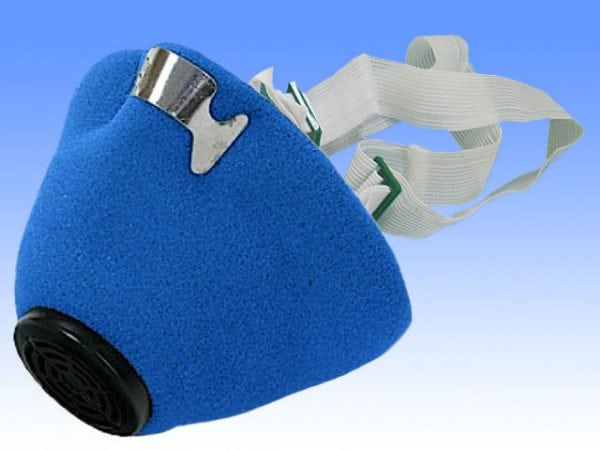In painting works, not only paint tools are used, but also various protective equipment. The respirator for painting protects the respiratory organs during repairs. Protecting the respiratory system is important not only during spraying, but also during any repair. Devices for working with paint must be correctly selected.

Personal protection purpose
Personal protection is used in such cases:
- from the ingress of various toxic gases;
- for work with couples;
- when spraying.
The respirator is used not only for various painting works on various surfaces, but also for all types of repairs, since it protects the respiratory system from smell, dust and small parts of paints and varnishes.
Respiratory devices for painting can be used once or several. If you use the reusable option, then after each use it is necessary to change the filter. The inside must be sanitized before use and moisture will be removed periodically during operation.
to contents ↑Classification
Devices for protection have a simple design and are divided into several groups:
- half masks;
- on the whole face;
- for the whole face with a forced supply of oxygen;
- on the whole face with a special breathing apparatus in which high pressure is maintained.

If we talk about technical requirements, then there are two groups:
- Filtering. You can breathe air that is cleaned through filters.
- Isolating. Oxygen is contained in the device itself. Air can be supplied through a hose or through a separate breathing apparatus.
to contents ↑To protect against the smell of paints and varnishes, you should not choose the simplest gauze bandage. It will not allow dust to get into the respiratory system, but it will be harder to cope with paint particles. find out what to do if you breathe in vapors of paint.
Benefits
When choosing protective equipment, you need to pay attention to their main advantages:
- light weight, so the body will not be loaded;
- low resistance to the respiratory process;
- quite a long time during which you can use masks.
If you have to work with paints that contain a lot of toxins, it will be difficult for a respirator to protect the respiratory organs from smells, since toxins are absorbed even through the skin. In such cases, you need a full-fledged protective suit.

Rules for choosing protective equipment
When choosing protective devices, several points must be taken into account in order to protect the respiratory organs:
- Conditions in which to use protection.
- Paint concentration.
- The state of the dyes.
If the paint concentration is normal, but the smell is strong, then you need at least the simplest filters, which are made of fine fiber materials, polymers. Such masks cost a little, but protect the body from toxic fumes.
When choosing protective equipment, one must take into account the distance of the person to the place of painting. If the process is long and the person is constantly in the staining zone, it is better to use lightweight types.
There are a number of points to consider when choosing a protective agent:
- In the mask, the valves or filters must be replaceable.
- It is better to choose a mask for the whole face.
- Protection should be very good, because even a person’s condition affects smell of paint.
- When using a mask there should be no discomfort. She must fit snugly to her face.
- Protection should be made of quality, non-allergenic materials.
- Air filtration should be very good.
Respirators for painting is a safe process for painting any surface without harm to health. The use of a face mask is a safety requirement. Using a high-quality protective agent during painting, you will protect yourself from possible complications.





You have written about the mask that it must fit to your face. In your opinion, the mask has obligations. Anyone who wrote school graduated?
I once worked on industrial painting, painted a large tank from the inside. He worked in a gas mask by no means with the simplest carbon filter, but he could not save it: after half an hour the smell of paint inside the gas mask became so strong that my head was spinning, and I barely managed to get out of the tank. Later I found out that the supplier purchased filters that do not protect against vapors of substances whose boiling point is below 60º. The authors of the article, do you seriously think that fine-fibered materials will protect the respiratory system from solvent vapor?